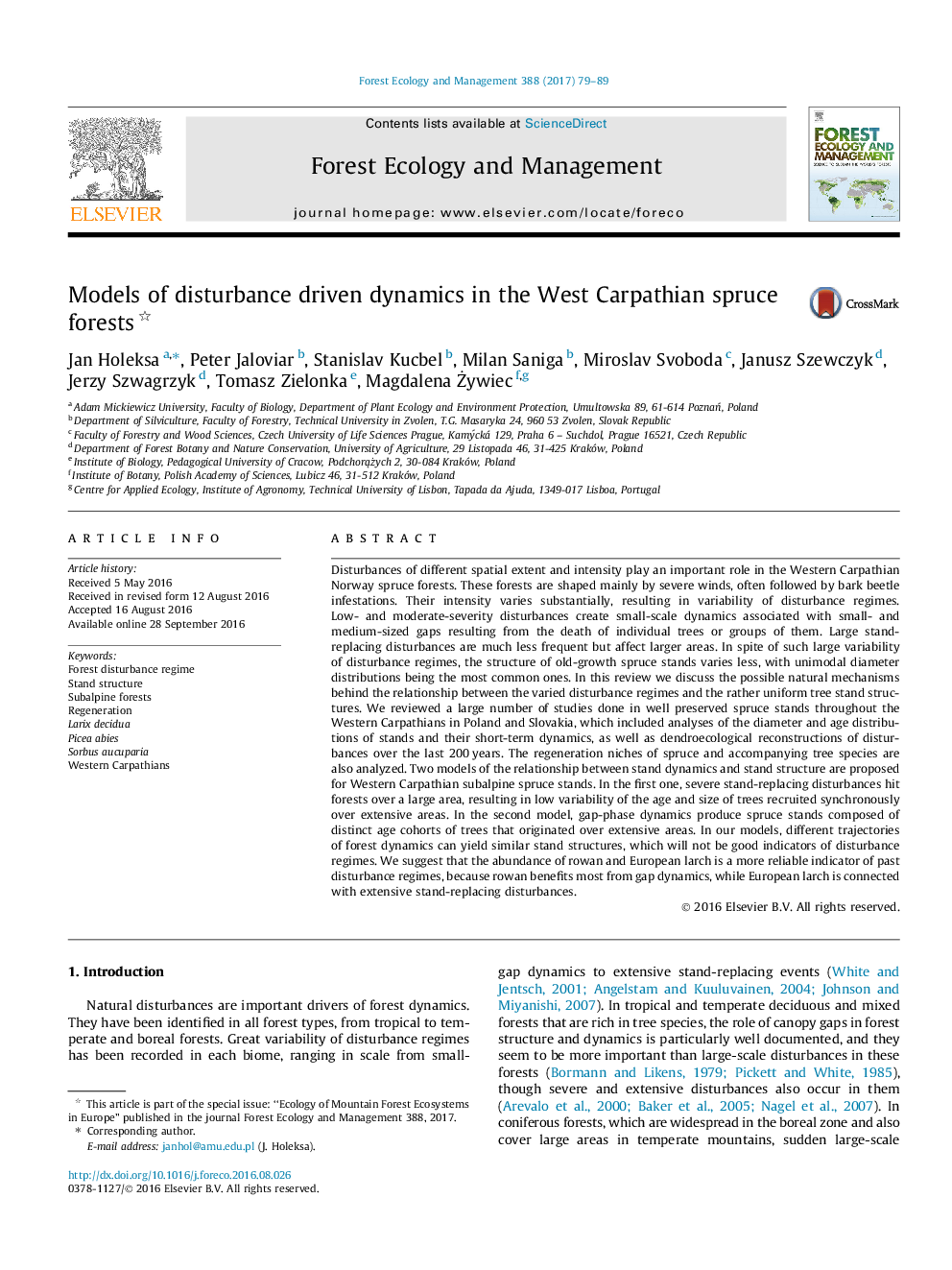| کد مقاله | کد نشریه | سال انتشار | مقاله انگلیسی | نسخه تمام متن |
|---|---|---|---|---|
| 4759534 | 1421370 | 2017 | 11 صفحه PDF | دانلود رایگان |

- The results of studies from the Western Carpathian spruce forests are reviewed.
- Disturbance regimes and resulted stand structures in spruce forests are recognised.
- The regeneration niches of Picea abies, Sorbus aucuparia and Larix decidua are characterised.
- Two models of the stand dynamics are proposed for the Western Carpathian spruce forest.
Disturbances of different spatial extent and intensity play an important role in the Western Carpathian Norway spruce forests. These forests are shaped mainly by severe winds, often followed by bark beetle infestations. Their intensity varies substantially, resulting in variability of disturbance regimes. Low- and moderate-severity disturbances create small-scale dynamics associated with small- and medium-sized gaps resulting from the death of individual trees or groups of them. Large stand-replacing disturbances are much less frequent but affect larger areas. In spite of such large variability of disturbance regimes, the structure of old-growth spruce stands varies less, with unimodal diameter distributions being the most common ones. In this review we discuss the possible natural mechanisms behind the relationship between the varied disturbance regimes and the rather uniform tree stand structures. We reviewed a large number of studies done in well preserved spruce stands throughout the Western Carpathians in Poland and Slovakia, which included analyses of the diameter and age distributions of stands and their short-term dynamics, as well as dendroecological reconstructions of disturbances over the last 200Â years. The regeneration niches of spruce and accompanying tree species are also analyzed. Two models of the relationship between stand dynamics and stand structure are proposed for Western Carpathian subalpine spruce stands. In the first one, severe stand-replacing disturbances hit forests over a large area, resulting in low variability of the age and size of trees recruited synchronously over extensive areas. In the second model, gap-phase dynamics produce spruce stands composed of distinct age cohorts of trees that originated over extensive areas. In our models, different trajectories of forest dynamics can yield similar stand structures, which will not be good indicators of disturbance regimes. We suggest that the abundance of rowan and European larch is a more reliable indicator of past disturbance regimes, because rowan benefits most from gap dynamics, while European larch is connected with extensive stand-replacing disturbances.
Journal: Forest Ecology and Management - Volume 388, 15 March 2017, Pages 79-89